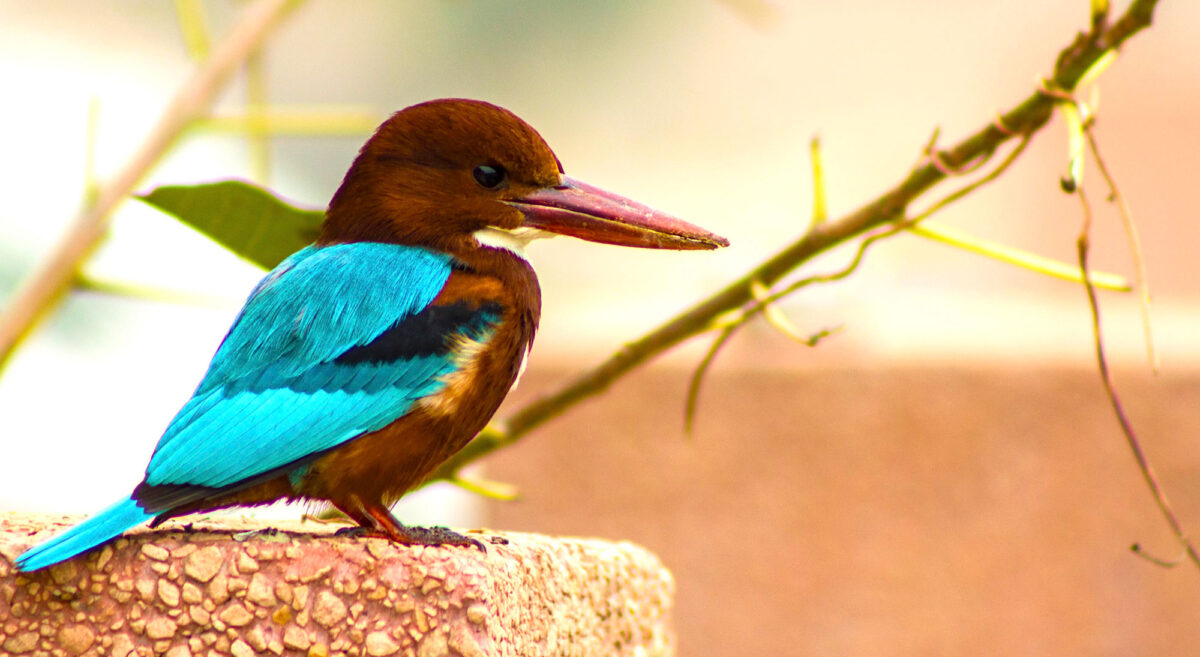Page snapshot: An introduction to kingfishers (family Alcendinidae), including a brief description of what they look like, what they eat, how diverse they are, where they live, and what their conservation status is.
Topics covered on this page: What are kingfishers?; Do kingfishers eat fish?; How many species of kingfishers are there and where do they live?; Are kingfishers threatened or endangered?; Resources.
Credits: Funded by the National Science Foundation. Any opinions, findings, and conclusions or recommendations expressed in this material are those of the author(s) and do not necessarily reflect the views of the National Science Foundation.
Updates: Page last updated May 12, 2024.
Image above: A white-throated kingfisher (Halcyon smyrnensis) in India. Photo by Vikramdeep Sidhu (flickr, Creative Commons Attribution 2.0 Generic license, image resized).
What are kingfishers?
Kingfishers are a group of birds that make up the bird family Alcedinidae. They are found on every continent on Earth except for Antarctica. Kingfishers can easily be easily recognized by their relatively large heads and beaks. They typically have short tails are are sometimes brightly colored. They are carnivorous (meat-eating) and often nest in burrows that they dig into banks.
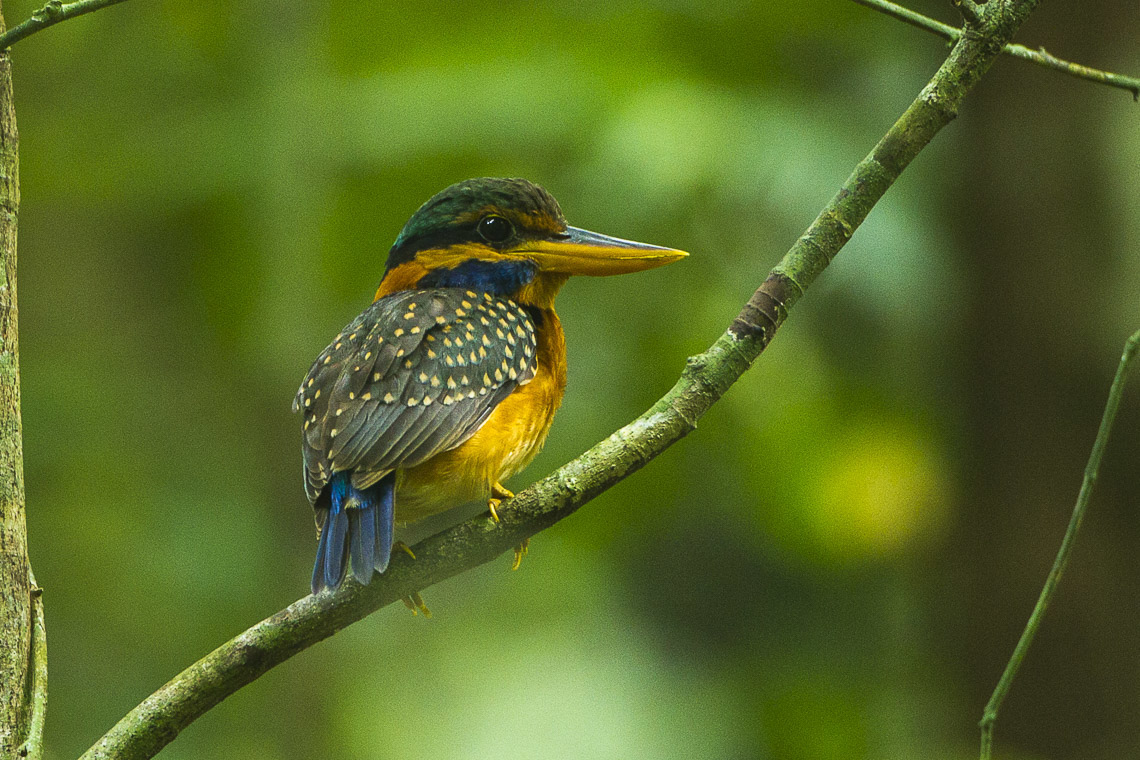
Rufous-collared kingfisher (Actenoides concretus), Thailand. Photo by Francesco Veronesi (flickr, Creative Commons Attribution-ShareAlike 2.0 Generic license).

Banded kingfisher (Lacedo pulchella), Bangka Belitung Islands, Indonesia. Photo by Abdi Birding (Wikimedia Commons, Creative Commons Attribution-ShareAlike 4.0 International license, image resized).
Do kingfishers eat fish?
Kingfishers are carnivorous, meaning that they eat other animals. Some kingfishers do eat fish, whereas other feed mostly on insects or larger terrestrial animals like lizards and snakes. Some even eat other birds!
Kingfishers that eat fish plunge dive, meaning that they dive into the water at high speeds in order to catch fish. They can reach 40 kilometers per hour (25 miles per hour) as they enter the water! One mystery about diving kingfishers is how they can dive into water at high speeds without injuring their brains. Scientists have studied the genetics of diving kingfishers and compared them to kingfishers that do not dive. They found some common gene variants in the diving kingfishers that they think may help protect the brains of these birds, but more research is needed.
Video of a kingfisher diving for fish. "Kingfisher: The Secret Life of the Shannon" by RTÉ via YouTube.
How many species of kingfisher are there and where do they live?
Kingfishers are divided into 18 genera and more than 100 species. They are found nearly worldwide, but they are not distributed evenly in every part of the world. Most species occur in tropical Asia, Australia, and islands in the Pacific.
Kingfishers of Europe
The common kingfisher or river kingfisher (Alcedo atthis) is the only kingfisher found in Europe. This kingfisher has teal and orange feathers and hunts along rivers, diving for fish. In addition to Europe, the common kingfisher can be found in small parts of northern Africa and in large regions of Asia.

A common kingfisher (Alcedo atthis), France. Photo by Alexis Lours (Wikimedia Commons, Creative Commons Attribution 4.0 International license, image resized).
Kingfishers of Africa
Six genera and about 20 species of kingfishers are found in Africa and Madagascar. These range from the tiny African dwarf kingfisher (Ispidina lecontei), which is about 10 centimeters (about 4 inches) in length, to the the giant kingfisher (Megaceryle maxima), which ranges from 42 to 46 cm (about 16.5 to 18 inches) in length.
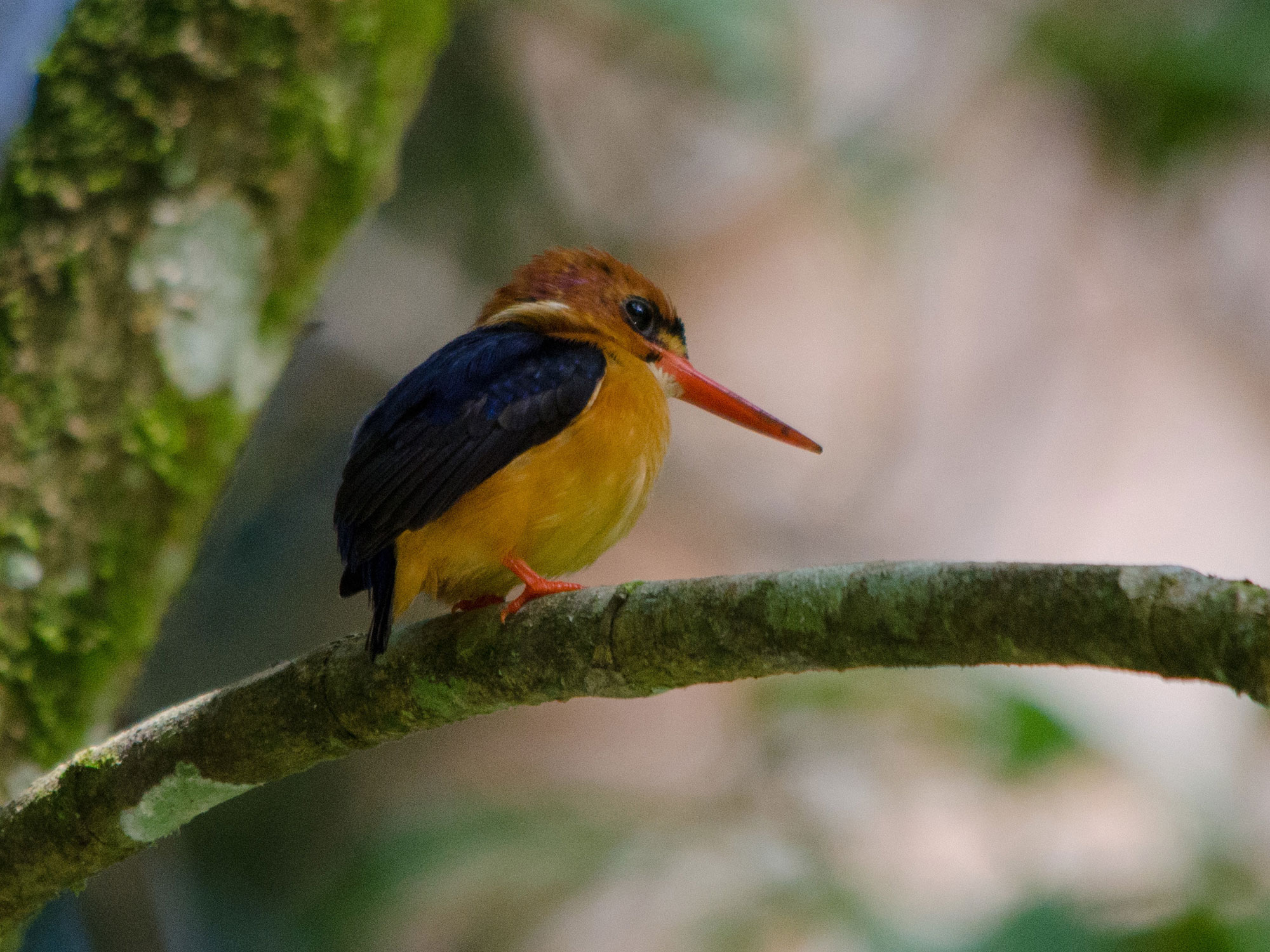
An African dwarf kingfisher (Ispidina lecontei), Uganda. Photo by William Stephens (iNaturalist, Creative Commons Attribution 4.0 International license, image resized).
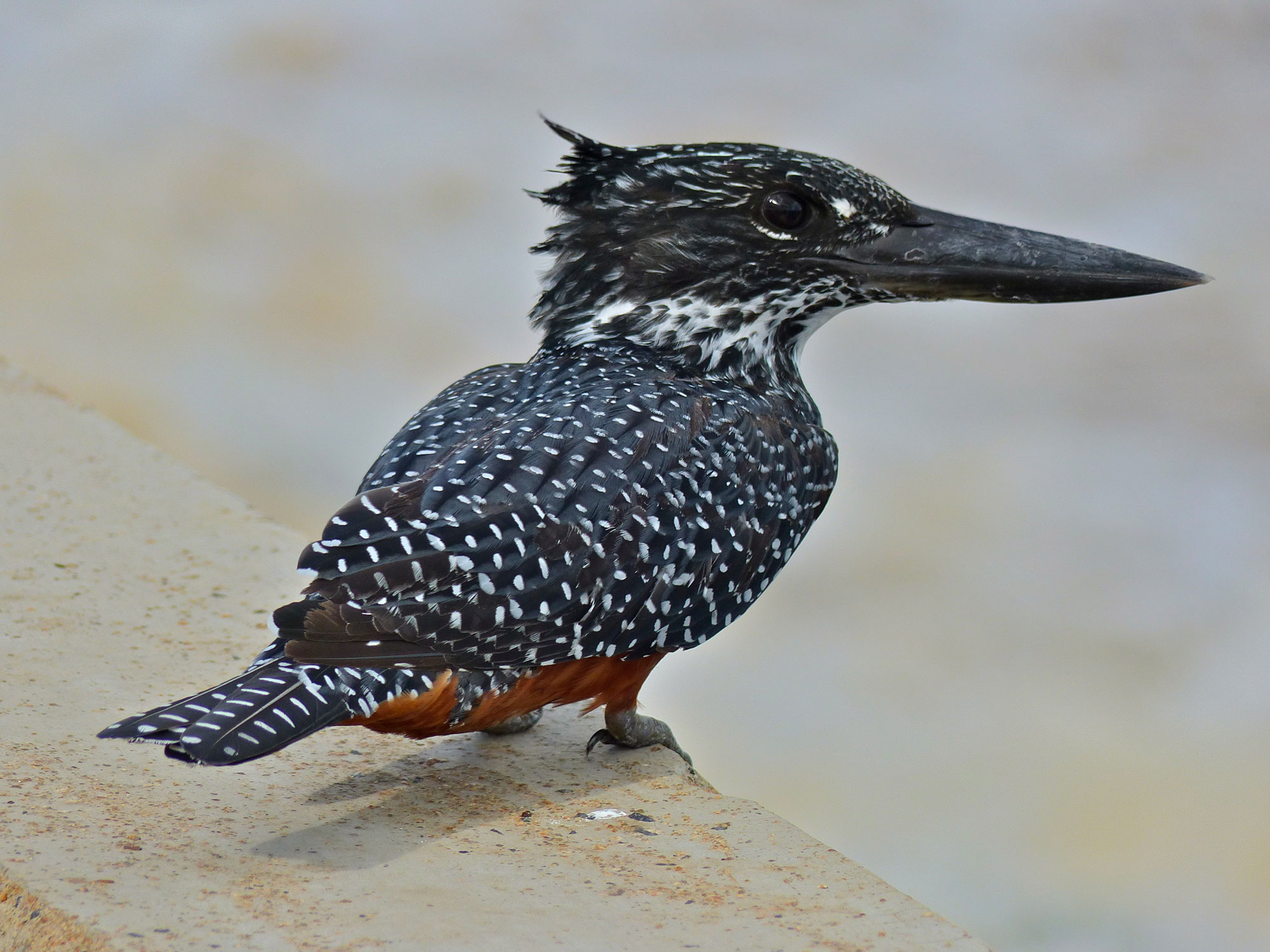
A female giant kingfisher (Megaceryle maxima), South Africa. Photo by Bernard DUPONT (flickr, Creative Commons Attribution-ShareAlike 2.0 Generic license, image resized).
Kingfishers of Asia
Ten genera and about 40 species of kingfishers are found in Asia. In this region, the relatively large stork-billed kingfisher (Pelargopsis capentsis) eats mostly crabs, although it will also hunt many other animals, including other birds. An unusual blue, black, and white kingfisher, the white-rumped kingfisher (Caridonax fulgidus) is found only on the Lesser Sunda Islands (in Indonesia) and eats insects. Two other diverse kingfisher genera (Ceyx and Todirampus) have many species that live on islands in this region, especially in the Philippines, Indonesia, and the Maluku Islands (Moluccas).

A crested kingfisher (Megaceryle lugubris), Hokkaido, Japan. Photo by Tokumi (Wikimedia Commons).
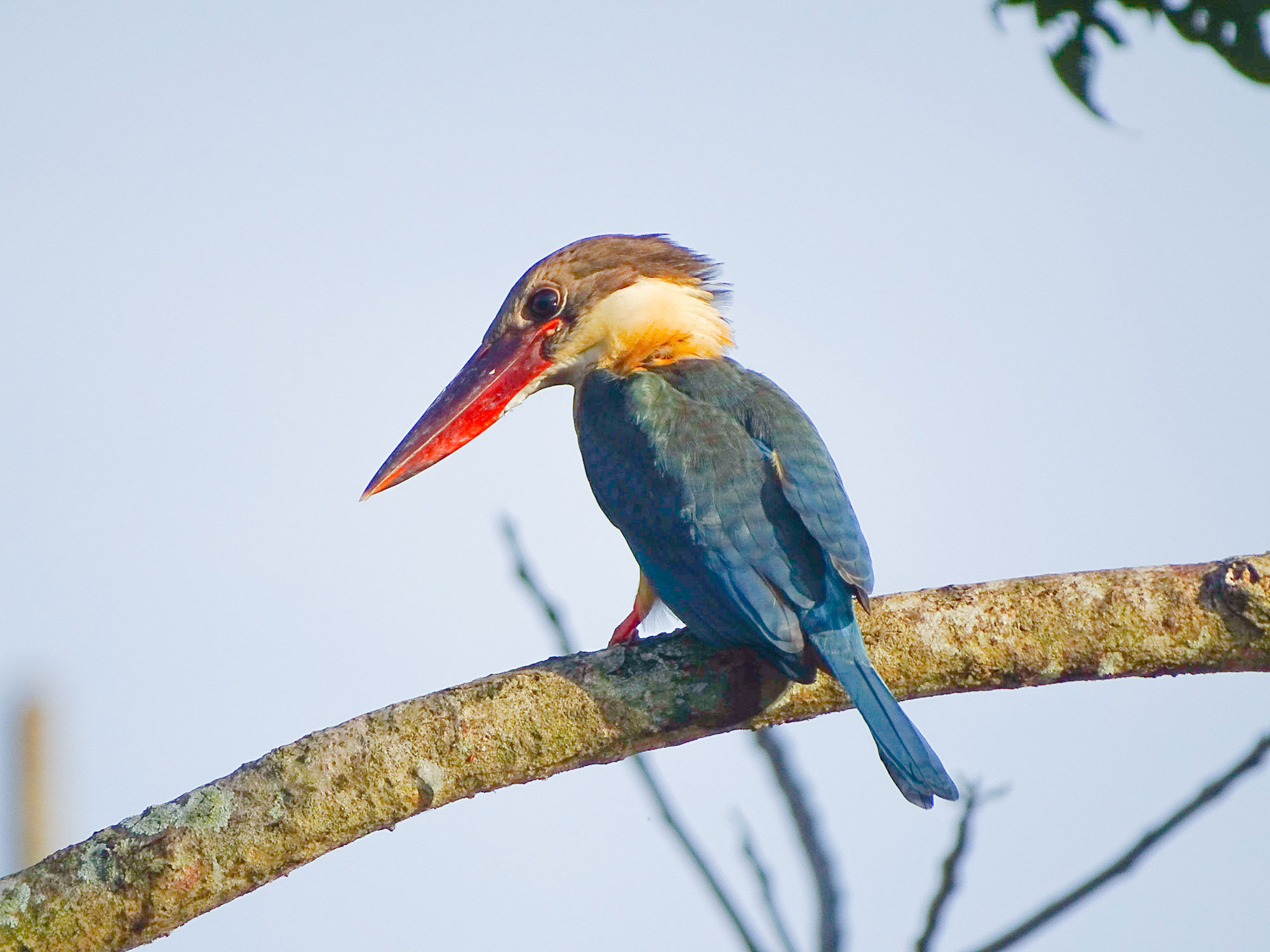
A stork-billed kingfisher (Pelargopsis capensis), Kerala, India. Photo by Renjusplace (Wikimedia Commons, Creative Commons Attribution-ShareAlike 4.0 International license, image resized).
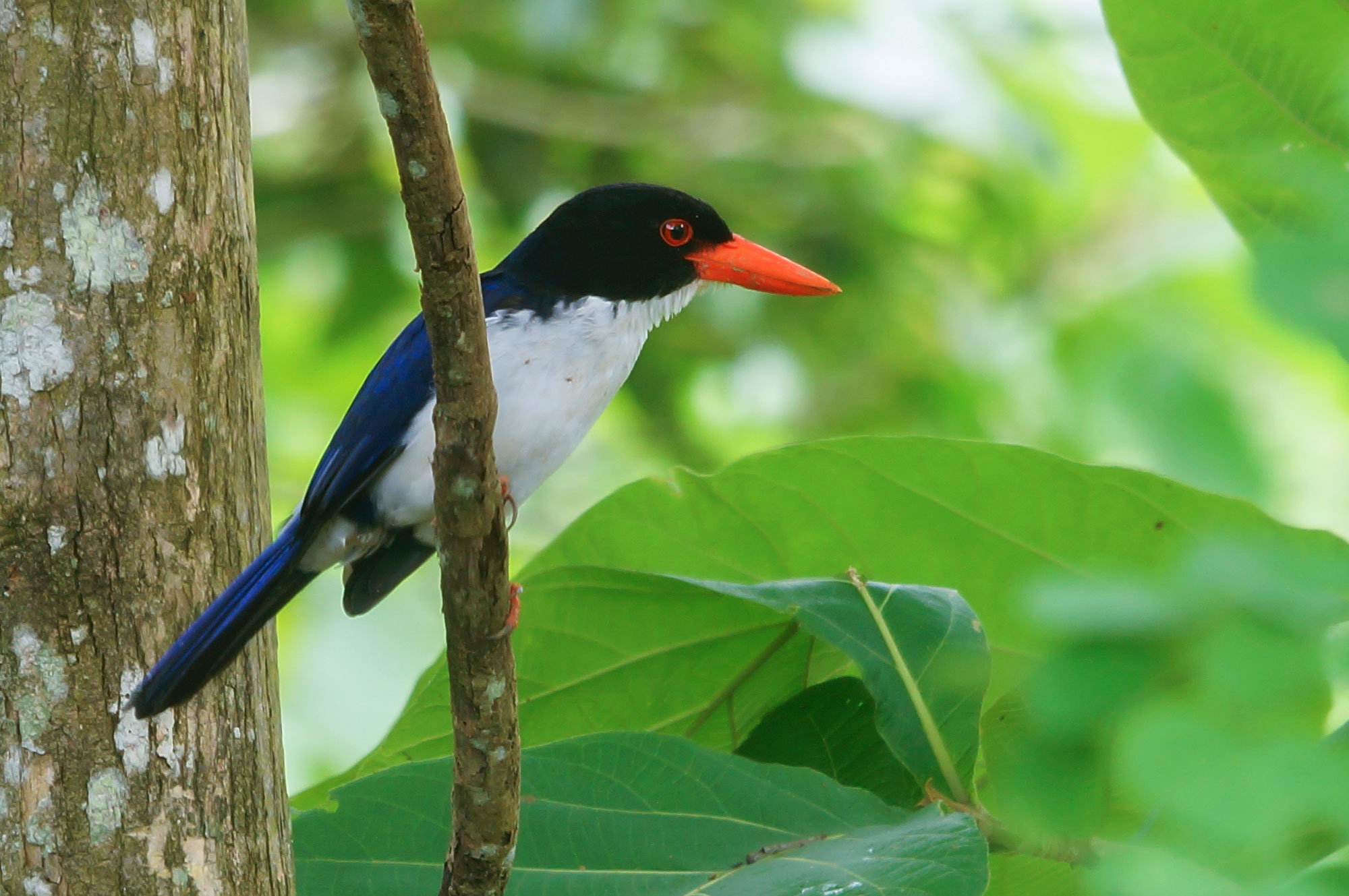
A white-rumped kingfisher (Caridonax fulgidus), Indonesia. Photo by Abdul Azis Gizan (flickr, Creative Commons Attribution 2.0 Generic license, image resized).
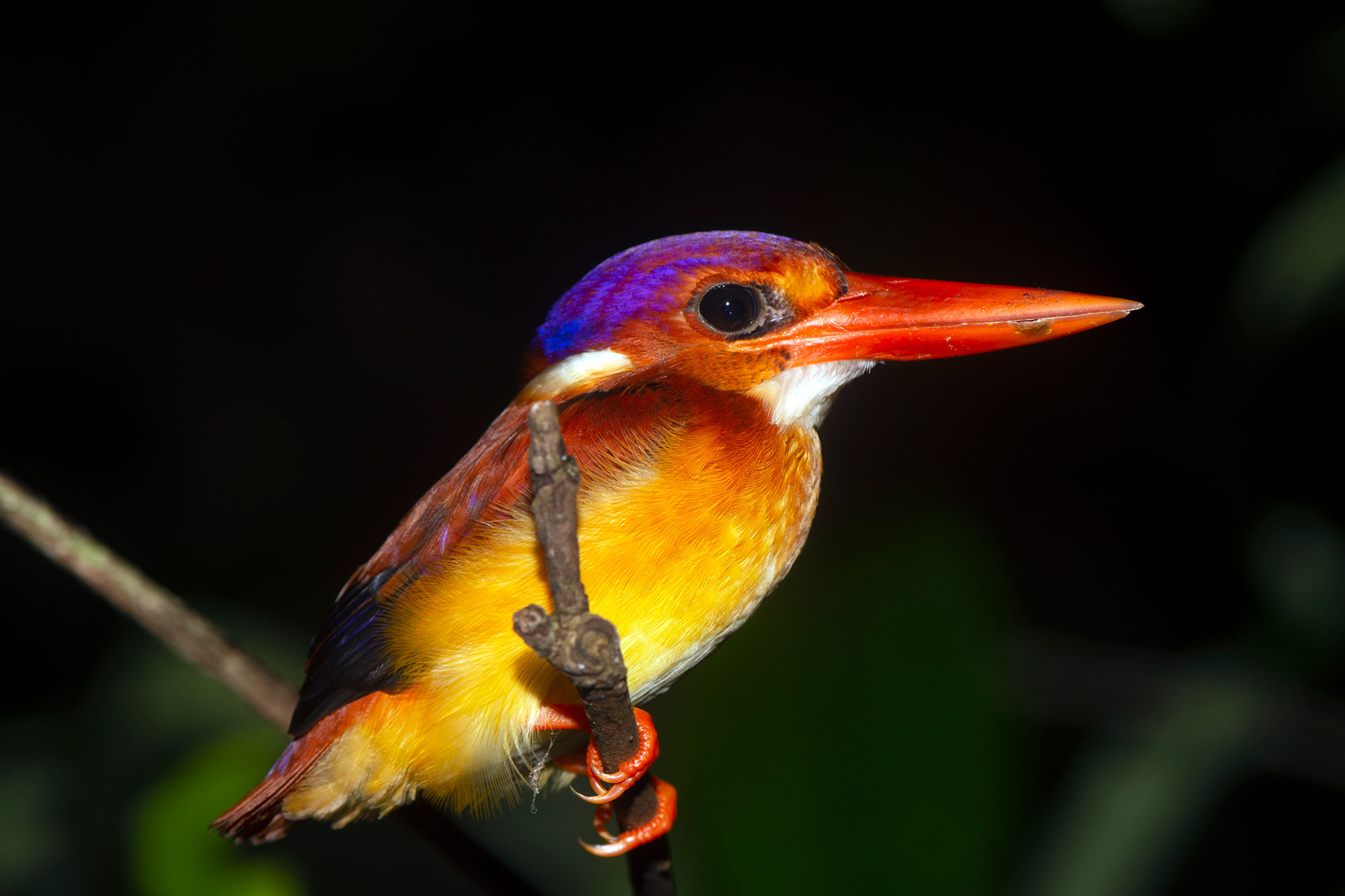
A rufous-backed dwarf-kingfisher (Ceyx rufidorsa), which is native to Southeast Asia. Photo by Fajar Kaprawi (Wikimedia Commons, Creative Commons Attribution-ShareAlike 4.0 International license, image resized).
Kingfishers of Australia, New Guinea, and the Pacific islands
Six genera and more than 50 species of kingfishers are found in Australia, New Guinea, and on Pacific islands. The most famous of the kingfishers from this region are undoubtedly the kookaburras (Dacelo), five species found in Australia, New Guinea, and on other islands.
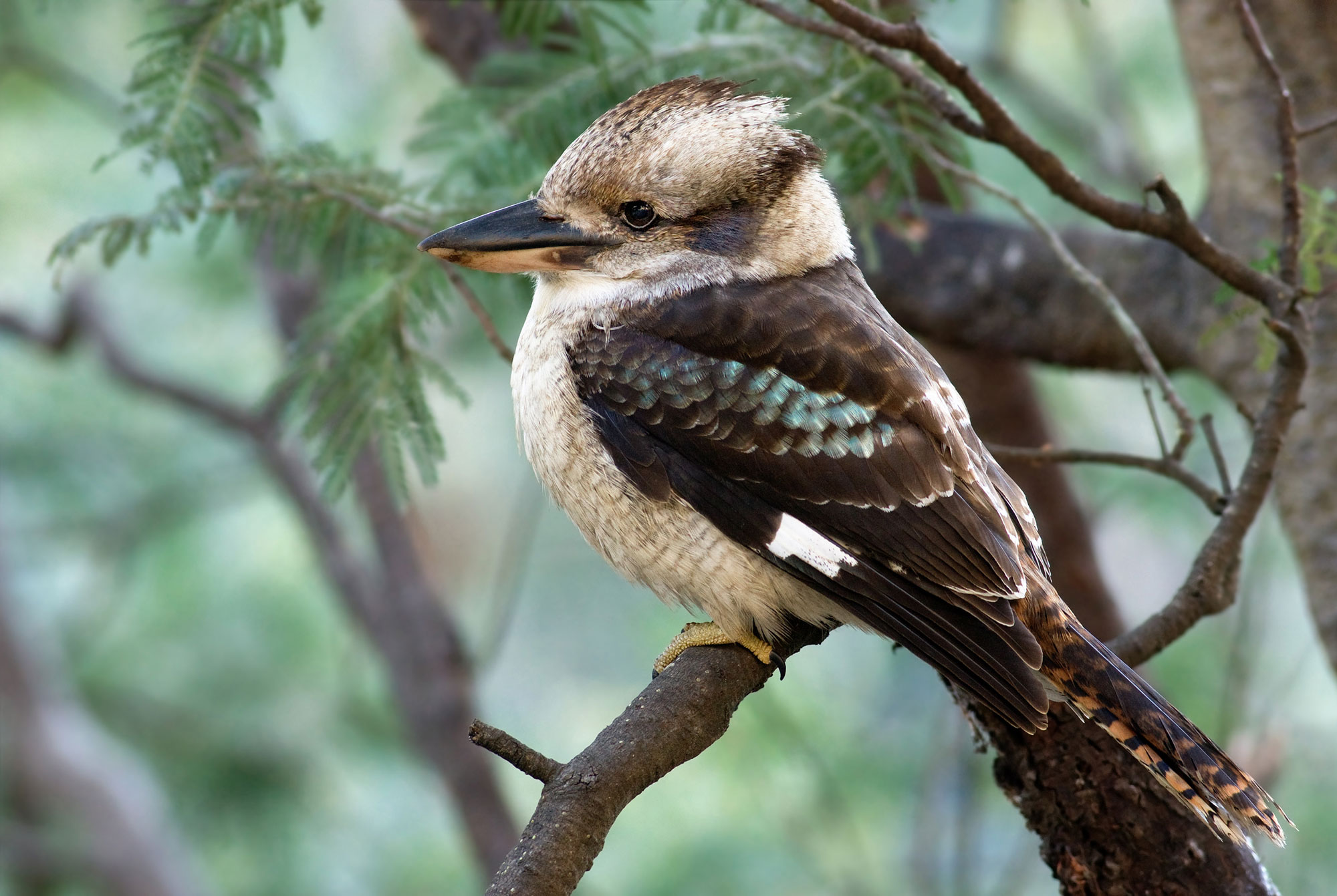
A laughing kookaburra (Dacelo novaeguineae) in Hobart, Tasmania, Australia. Photo by JJ Harrison (Wikimedia Commons, Creative Commons Attribution-ShareAlike 3.0 Unported license, image resized).
Two diverse kingfisher genera (Ceyx and Todirampus) have many species that live on islands in this region. Examples are the Pohnpei kingfisher (Todiramphus reichenbachii), which is found only on the island of Pohnpei in Micronesia, and the Makira dwarf-kingfisher (Ceyx gentianus), which lives only on the island of Makira in the Solomon Islands.
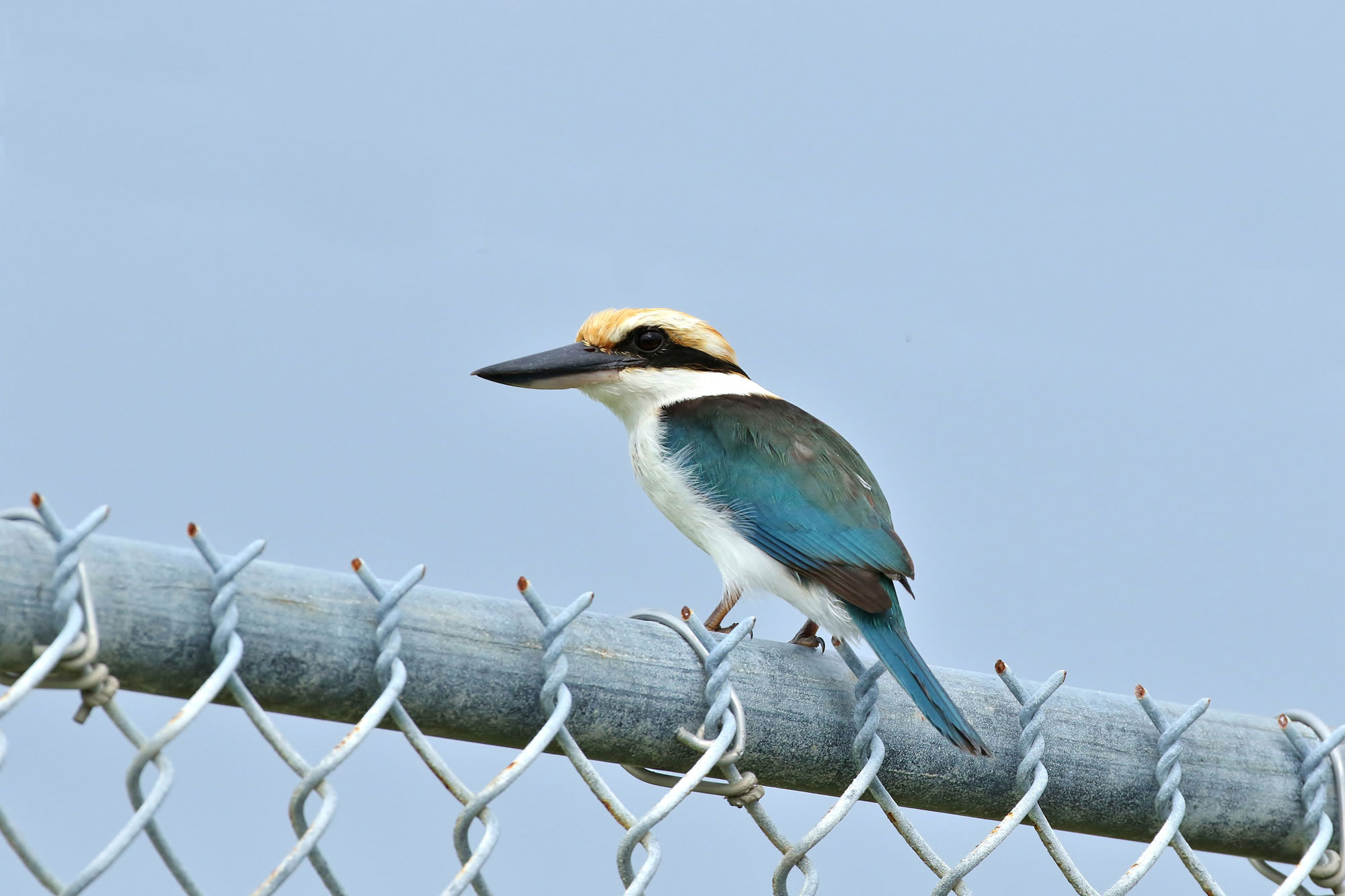
A Pohnpei kingfisher (Todiramphus reichenbachii), Pohnpei, Micronesia. Photo by Thibaud Aronson (iNaturalist, Creative Commons Attribution-ShareAlike 4.0 International license).
Paradise-kingfishers (Tanysiptera) are a group of about nine species of unusual kingfishers that live in Australia, New Guinea, and nearby islands. Unlike other kingfishers, the paradise-kingfishers have extremely long tails. They feed mostly on larvae, invertebrates, snails, and other small terrestrial animals.
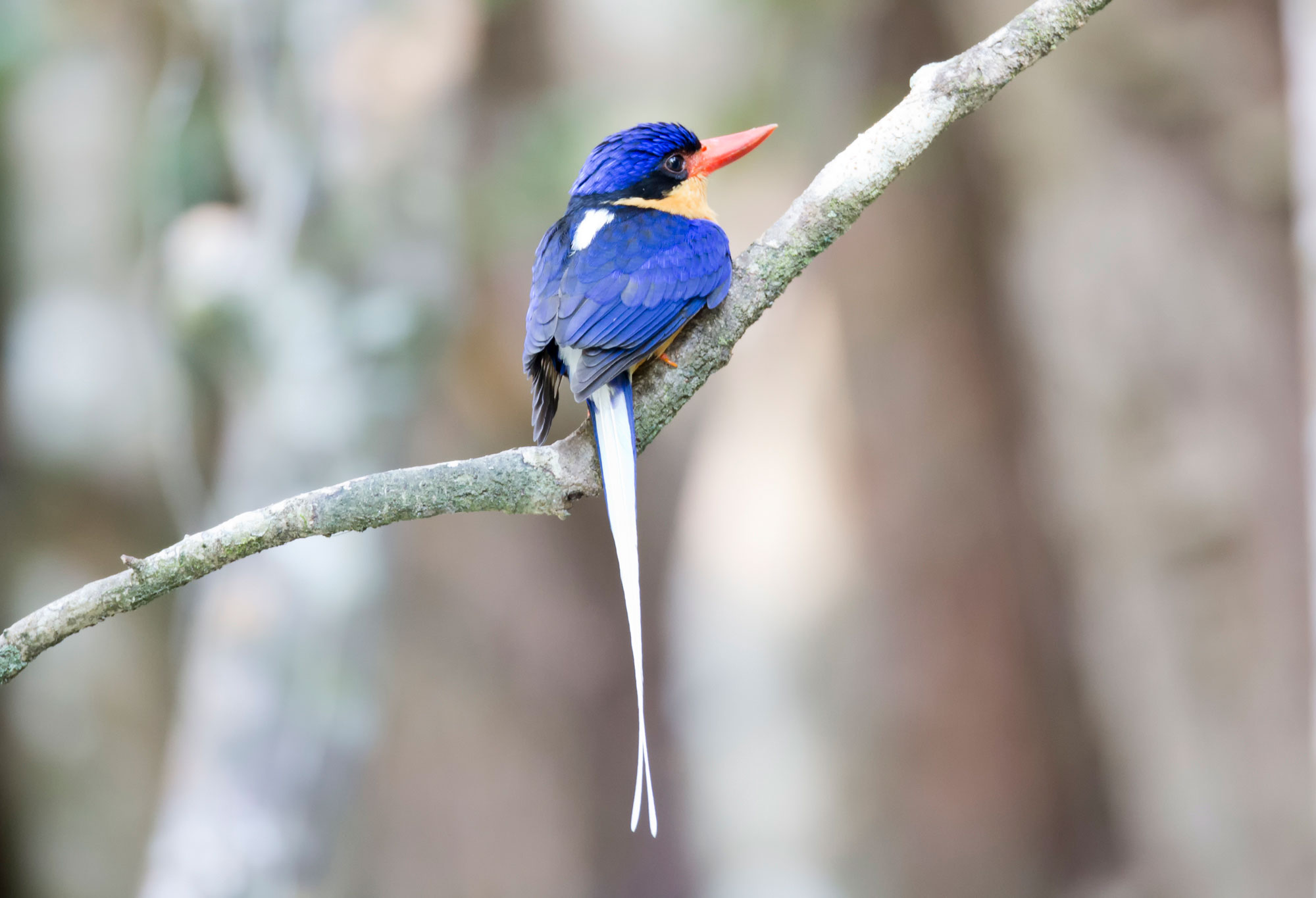
A buff-breasted paradise-kingfisher (Tanysiptera sylvia), Queensland, Australia. Photo by Jim Bendon (flickr, Creative Commons Attribution-ShareAlike 2.0 Generic license, image cropped).
Kingfishers of the Americas
Only 2 genera and six species of kingfishers are found in the Americas. Three of the American species—the Amazon kingfisher (Chloroceryle amazona), the American pygmy kingfisher (Chloroceryle aenea), and the green-and-rufous kingfisher (Chloroceryle inda)—are found mostly in the neotropics, from Mexico to northern South America. The ringed kingfisher (Megaceryle torquata) is the only kingfisher found in southern South America, although its range extends north into Mexico and southernmost Texas.
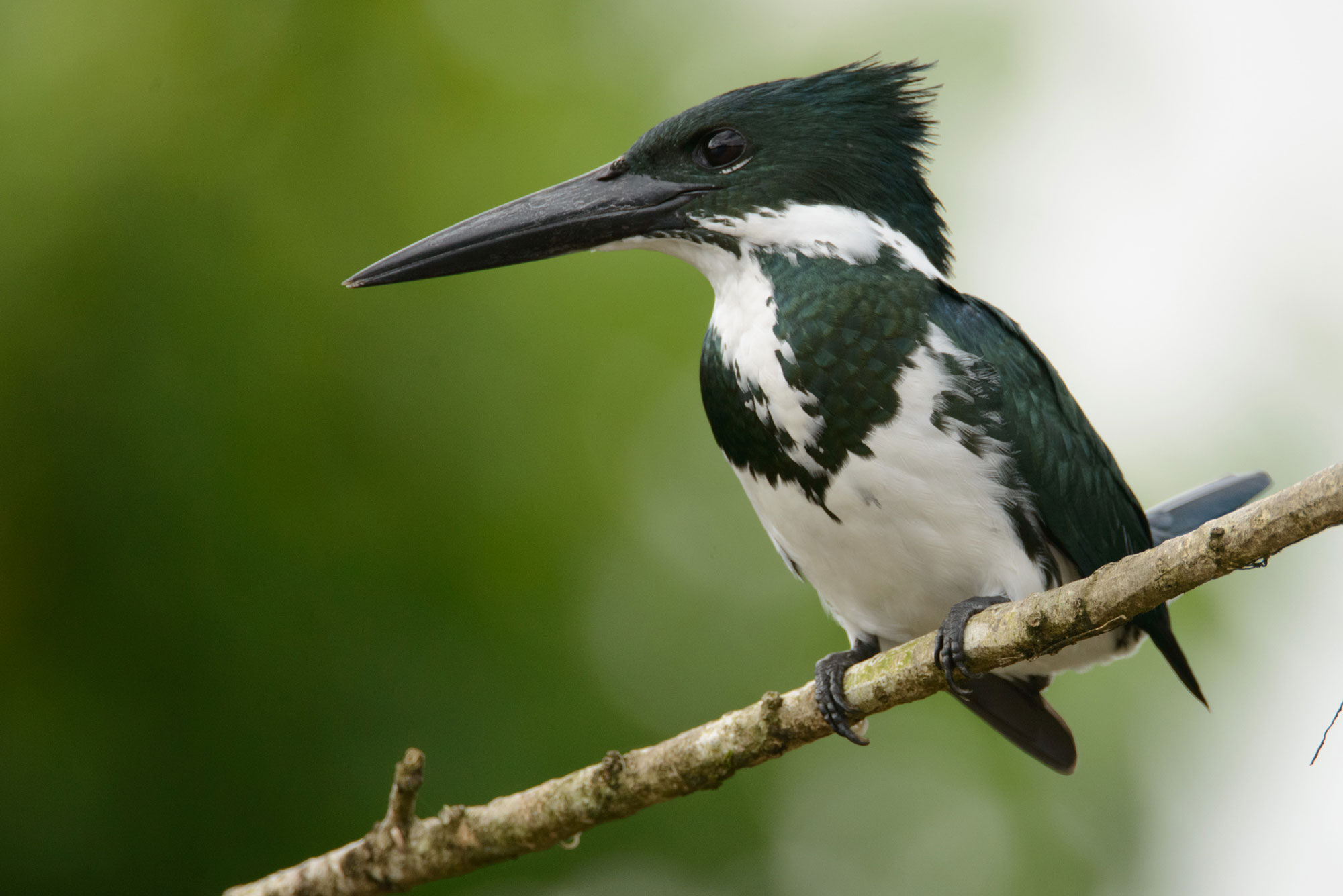
A female Amazon kingfisher (Chloroceryle amazona). Photo by Manuel & Kathrin Thiele (Wikimedia Commons, Creative Commons Attribution-ShareAlike 4.0 International license, image resized).
The green kingfisher (Chloroceryle americana) ranges as far north as Texas and as far south as northern Argentina. The belted kingfisher (Megaceryle alcyon), which is found from Alaska and northern Canada to the northern coast of South America, is the only kingfisher that is found widely in North America north of Mexico.

A female belted kingfisher (Megaceryle alcyon) in Big Cypress National Preserve, Ochopee, Florida, USA. In belted kingfishers, the females have the orange belt that give the birds their name, whereas the males lack a belt. Photo by July Gallagher (flickr, Creative Commons Attribution 2.0 Generic license, image resized).
Are kingfishers threatened or endangered?
Many species of kingfishers are not currently threatened or endangered. Nevertheless, the IUCN (International Union for Conservation of Nature and Natural Resources) lists more than 30 species as vulnerable or near threatened, and an additional four are considered critically endangered.
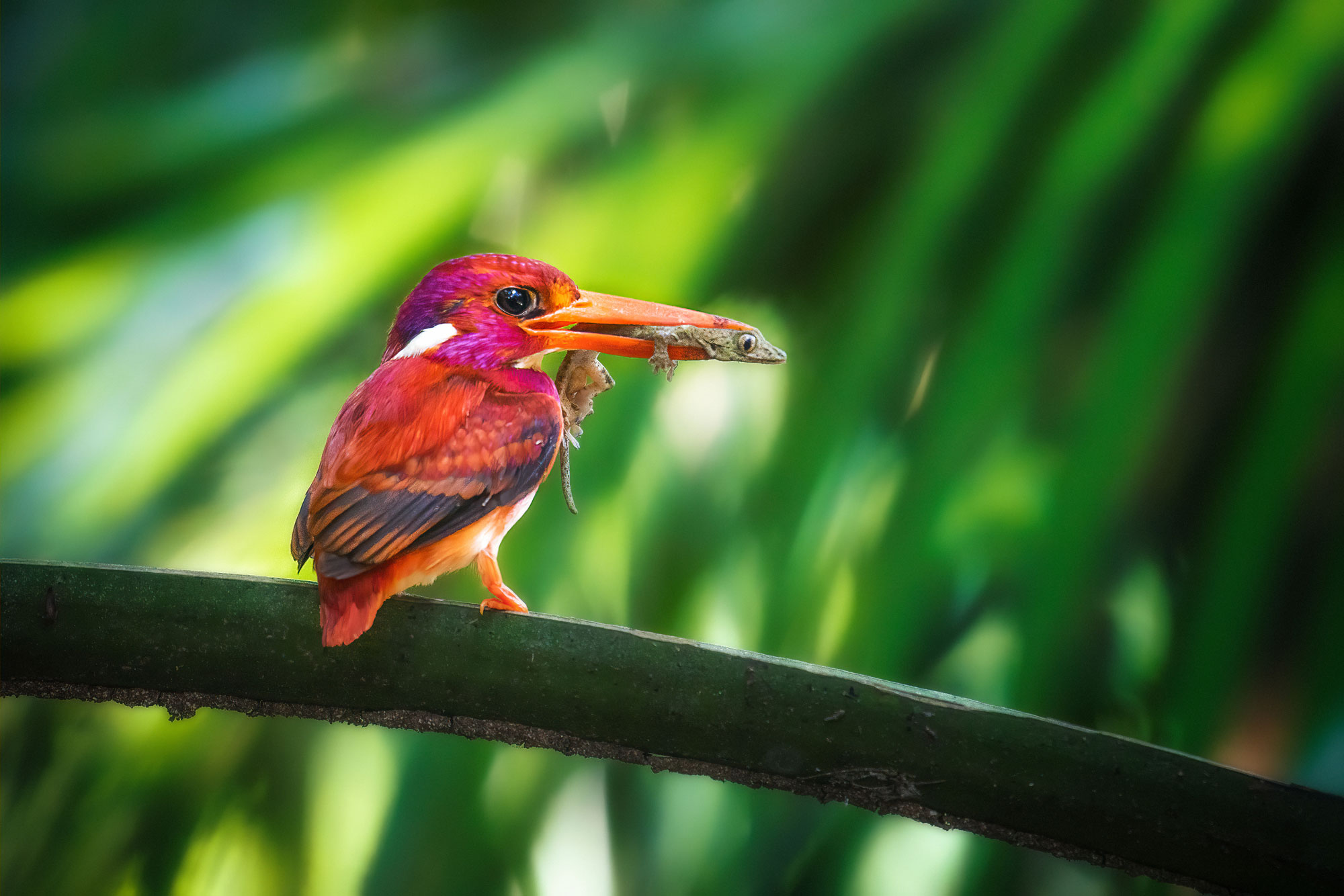
A South Philippine dwarf kingfisher (Ceyx mindanensis) with a lizard, Misamis Oriental, Philippines. This species is considered vulnerable by the IUCN. Photo by Kirkamon A Cabello (Wikimedia Commons, Creative Commons Attribution-ShareAlike 4.0 International, image resized).
Habitat loss threatens some species of kingfishers. Some natural habitats where kingfishers live are being cleared to harvest wood, to make fields for agriculture, or for development. One kingfisher that is critically endangered, the Javan blue-banded kingfisher (Alcedo euryzona), is threatened by habitat loss due to land clearing on the island of Java in Indonesia. Likewise, most of the habitat of the critically endangered Sangihe dwarf-kingfisher (Ceyx sangirensis) has been cleared for agriculture or replanted with trees that are not native to the island of Sangihe, also in Indonesia.

Cleared land near Gunung Lumut, East Kalimantan, Borneo, Indonesia. This land may have been cleared for a palm plantation. At least 12 species of kingfishers live on Borneo Photo by Moses Ceaser/CIFOR (flickr, Creative Commons Attribution-NonCommercial-NoDerivs 2.0 Generic license).
Some other kingfishers are threatened by predatory invasive species that eat birds, nestlings, or eggs. Invasive species are a particular problem for kingfishers that live on islands, which may have very limited ranges and relatively small populations. Domestic cats, rats, snakes, and even owls have impacted kingfisher populations on islands. The only kingfisher that is considered extinct in the wild, the Guam kingfisher (Todiramphus cinnamominus), was decimated by the brown tree snake, which was introduced to the island in the 1940s.
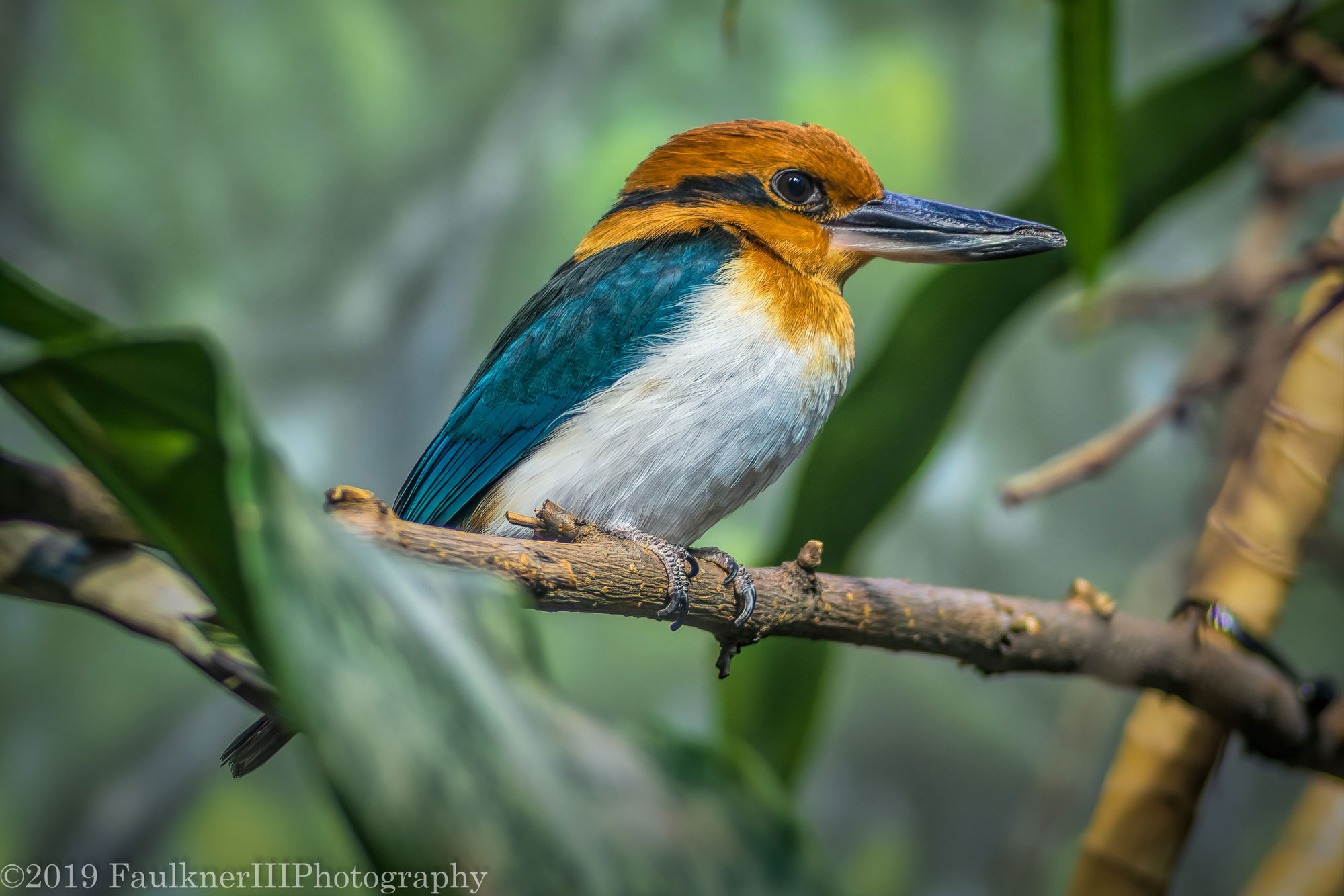
A Guam kingfisher (Todiramphus cinnamominus) at the Lincoln Park Zoo, Chicago, Illinois. Photo by Fred Faulkner (flickr, Creative Commons Attribution 2.0 Generic license, image resized).
Resources
Websites
All About Birds: Alcedinidae (kingfishers): https://birdsoftheworld/bow/species/alcedi1/cur/introduction
Borneo bird images: Alcedinidae Kingfishers (Borneo Bird Club): https://www.borneobirdimages.com/family/alcedinidae_kingfishers
Finding the genes that help kingfishers dive without hurting their brains (Field Museum): https://www.fieldmuseum.org/about/press/finding-the-genes-that-help-kingfishers-dive-without-hurting-their-brains
IUCN Red List of Threatened Species: https://www.iucnredlist.org/
Articles & reports
McKie, R. 2023. Scientists battle to save Guam kingfisher after snakes introduced. The Guardian, 23 July 2023. https://www.theguardian.com/environment/2023/jul/23/scientists-battle-to-save-guam-kingfisher-after-snakes-introduced
Winkler, D.W., S.M. Billerman, and I.J. Lovette. 2020. Kingfishers (Alcedinidae), version 1.0. In Birds of the World Online (S.M. Billerman, B.K. Keeney, P.G. Rodewald, and T.S. Schulenberg, eds.). Cornell Lab of Ornithology, Ithaca, NY, U.S.A. [subscription needed to access content] https://doi-org.proxy.library.cornell.edu/10.2173/bow.alcedi1.01
Videos
Belted kingfishers build nests out of the bones of their prey (Animalogic, on YouTube): https://youtu.be/t0b89JRFKWA?feature=shared
Scientific articles
Eliason, C.M., L.E. Mellenthin, T. Hains, J.M. McCullough, S. Pirro, M.J. Andersen, and S.J. Hackett. 2023. Genomic signatures of convergent shifts to plunge-diving behavior in birds. Communications Biology 6: 1011. https://doi.org/10.1038/s42003-023-05359-z



